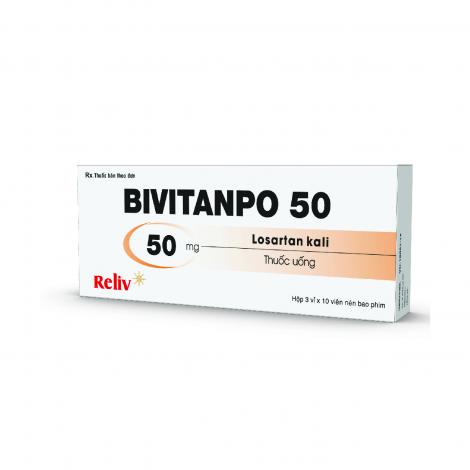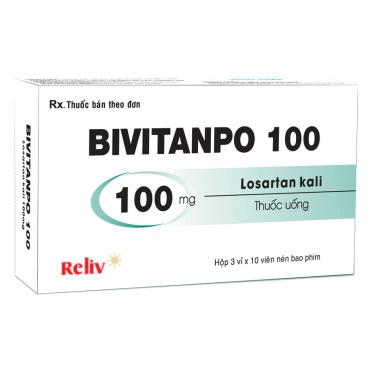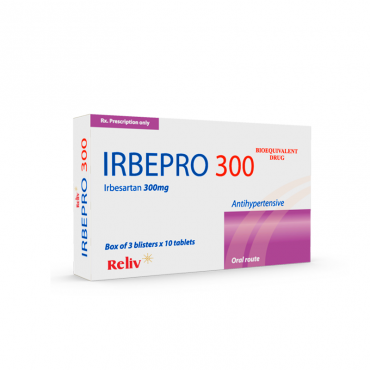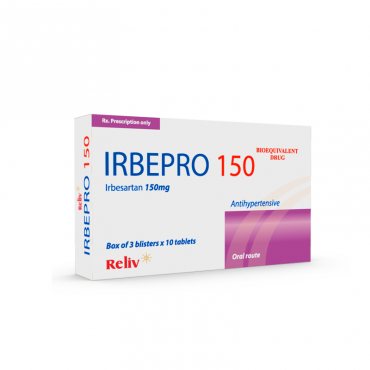Hypertension
The usual starting and maintenance dose is 50 mg once daily for most patients. The maximal antihypertensive effect is attained 3-6 weeks after initiation of therapy. Some patients may receive an additional benefit by increasing the dose to 100 mg once daily (in the morning). Losartan may be administered with other antihypertensive agents, especially with diuretics (e.g. hydrochlorothiazide).
Hypertensive type II diabetic patients with proteinuria ≥ 0.5 g/day
The usual starting dose is 50 mg once daily. The dose may be increased to 100 mg once daily based on blood pressure response from one month onwards after initiation of therapy. Losartan may be administered with other antihypertensive agents (e.g. diuretics, calcium channel blockers, alpha- or beta-blockers, and centrally acting agents) as well as with insulin and other commonly used hypoglycaemic agents (e.g. sulfonylureas, glitazones and glucosidase inhibitors).
Heart Failure
The usual initial dose of losartan in patients with heart failure is 12.5 mg once daily. The dose should generally be titrated at weekly intervals (i.e. 12.5 mg daily, 25 mg daily, 50 mg daily, 100 mg daily, up to a maximum dose of 150 mg once daily) as tolerated by the patient.
Reduction in the risk of stroke in hypertensive patients with left ventricular hypertrophy documented by ECG
The usual starting dose is 50 mg of losartan once daily. A low dose of hydrochlorothiazide should be added and/ or the dose of losartan should be increased to 100 mg once daily based on blood pressure response.
Special populations
Use in patients with intravascular volume depletion:
For patients with intravascular volume-depletion (e.g. those treated with high dose diuretics), a starting dose of 25 mg once daily should be considered.
Use in patients with renal impairment and haemodialysis patients:
No initial dosage adjustment is necessary in patients with renal impairment and in haemodialysis patients.
Use in patients with hepatic impairment:
A lower dose should be considered for patients with a history of hepatic impairment. There is no therapeutic experience in patients with severe hepatic impairment. Therefore, losartan is contraindicated in patients with severe hepatic impairment.
Paediatric population
6 months − less than 6 years
The safety and efficacy of children aged 6 months to less than 6 years has not been established.
6 years to 18 years
For patients who can swallow tablets, the recommended dose is 25 mg once daily in patients > 20 to < 50 kg. (In exceptional cases the dose can be increased to a maximum of 50 mg once daily). Dosage should be adjusted according to blood pressure response.
In patients > 50 kg, the usual dose is 50 mg once daily. In exceptional cases the dose can be adjusted to a maximum of 100 mg once daily. Doses above 1.4 mg/ kg (or in excess of 100 mg) daily have not been studied in paediatric patients.
Losartan is not recommended for use in children under 6 years old, as limited data are available in these patient groups.
It is not recommended in children with glomerular filtration rate < 30 ml/ min / 1.73 m2, as no data are available.
Losartan is also not recommended in children with hepatic impairment.
Use in Elderly
Although consideration should be given to initiating therapy with 25 mg in patients over 75 years of age, dosage adjustment is not usually necessary for the elderly.
Losartan potassium tablets are available in 25 mg, 50 mg and 100 mg.
METHOD OF ADMINISTRATION
Losartan tablets should be swallowed whole with a glass of water.
Losartan potassium may be administered with or without food.
• Hypersensitivity to the active substance or to any of the excipients of this drug.
• 2nd and 3rd trimester of pregnancy.
• Severe hepatic impairment.
• The concomitant use of Losartan potassium with aliskiren-containing products is contraindicated in patients with diabetes mellitus or renal impairment (GFR < 60 ml/min/1.73 m2)
Hypersensitivity
Angioedema. Patients with a history of angioedema (swelling of the face, lips, throat, and/ or tongue) should be closely monitored.
Hypotension and Electrolyte/ Fluid Imbalance
Symptomatic hypotension, especially after the first dose and after increasing of the dose, may occur in patients who are volume and/or sodium depleted by vigorous diuretic therapy, dietary salt restriction, diarrhoea or vomiting. These conditions should be corrected prior to administration of losartan, or a lower starting dose should be used. This also applies to children 6 to 18 years of age.
Electrolyte imbalances
Electrolyte imbalances are common in patients with renal impairment, with or without diabetes, and should be addressed. In a clinical study conducted in type 2 diabetic patients with nephropathy, the incidence of hyperkaelemia was higher in the group treated with losartan as compared to the placebo group. Therefore, the plasma concentrations of potassium as well as creatinine clearance values should be closely monitored, especially patients with heart failure and a creatinine clearance between 30-50 ml/ min should be closely monitored.
The concomitant use of potassium-sparing diuretics, potassium supplements, potassium-containing salt substitutes, or other drugs that may increase serum potassium (e.g., trimethoprim-containing products) with losartan is not recommended.
Hepatic impairment
Based on pharmacokinetic data which demonstrate significantly increased plasma concentrations of losartan in cirrhotic patients, a lower dose should be considered for patients with a history of hepatic impairment. There is no therapeutic experience with losartan in patients with severe hepatic impairment. Therefore losartan must not be administered in patients with severe hepatic impairment.
Losartan is not recommended in children with hepatic impairment.
Renal impairment
As a consequence of inhibiting the renin-angiotensin system, changes in renal function including renal failure have been reported (in particular, in patients whose renal function is dependent on the renin- angiotensin-aldosterone system such as those with severe cardiac insufficiency or pre-existing renal dysfunction). As with other medicinal products that affect the renin-angiotensin-aldosterone system, increases in blood urea and serum creatinine have also been reported in patients with bilateral renal artery stenosis or stenosis of the artery to a solitary kidney; these changes in renal function may be reversible upon discontinuation of therapy. Losartan should be used with caution in patients with bilateral renal artery stenosis or stenosis of the artery to a solitary kidney.
Use in paediatric patients with renal impairment
Losartan is not recommended in children with glomerular filtration rate <30 ml/ min/ 1.73 m2 as no data are available.
Renal function should be regularly monitored during treatment with losartan as it may deteriorate. This applies particularly when losartan is given in the presence of other conditions (fever, dehydration) likely to impair renal function.
Concomitant use of losartan and ACE inhibitors has shown to impair renal function. Therefore, concomitant use is not recommended.
Renal transplantation
There is no experience in patients with recent kidney transplantation.
Primary hyperaldosteronism
Patients with primary aldosteronism generally will not respond to antihypertensive medicinal products acting through inhibition of the renin-angiotensin system. Therefore, the use of losartan is not recommended.
Coronary heart disease and cerebrovascular disease
As with any antihypertensive agents, excessive blood pressure decrease in patients with ischaemic cardiovascular and cerebrovascular disease could result in a myocardial infarction or stroke.
Heart failure
In patients with heart failure, with or without renal impairment, there is as with other medicinal products acting on the renin angiotensin system a risk of severe arterial hypotension, and (often acute) renal impairment.
There is no sufficient therapeutic experience with losartan in patients with heart failure and concomitant severe renal impairment, in patients with severe heart failure (NYHA class IV) as well as in patients with heart failure and symptomatic life threatening cardiac arrhythmias. Therefore, losartan should be used with caution in these patient groups. The combination of losartan with a beta-blocker should be used with caution.
Aortic and mitral valve stenosis, obstructive hypertrophic cardiomyopathy
As with other vasodilators, special caution is indicated in patients suffering from aortic or mitral stenosis, or obstructive hypertrophic cardiomyopathy.
Pregnancy
Losartan should not be initiated during pregnancy. Unless continued losartan therapy is considered essential, patients planning pregnancy should be changed to alternative anti-hypertensive treatments which have an established safety profile for use in pregnancy. When pregnancy is diagnosed, treatment with losartan should be stopped immediately, and, if appropriate, alternative therapy should be started.
Dual blockade of the renin-angiotensin-aldosterone system (RAAS)
There is evidence that the concomitant use of ACE-inhibitors, angiotensin II receptor blockers or aliskiren increases the risk of hypotension, hyperkalaemia and decreased renal function (including acute renal failure). Dual blockade of RAAS through the combined use of ACE-inhibitors, angiotensin II receptor blockers or aliskiren is therefore not recommended.
If dual blockade therapy is considered absolutely necessary, this should only occur under specialist supervision and subject to frequent close monitoring of renal function, electrolytes and blood pressure.
ACE-inhibitors and angiotensin II receptor blockers should not be used concomitantly in patients with diabetic nephropathy.
Other warnings and precautions
As observed for angiotensin converting enzyme inhibitors, losartan and the other angiotensin antagonists are apparently less effective in lowering blood pressure in black people than in non- blacks, possibly because of higher prevalence of low-renin states in the black hypertensive population.
Excipients
This medicinal product contains lactose. Patients with rare hereditary problems of galactose intolerance, the total lactase deficiency or glucose-galactose malabsorption should not take this medicine.








